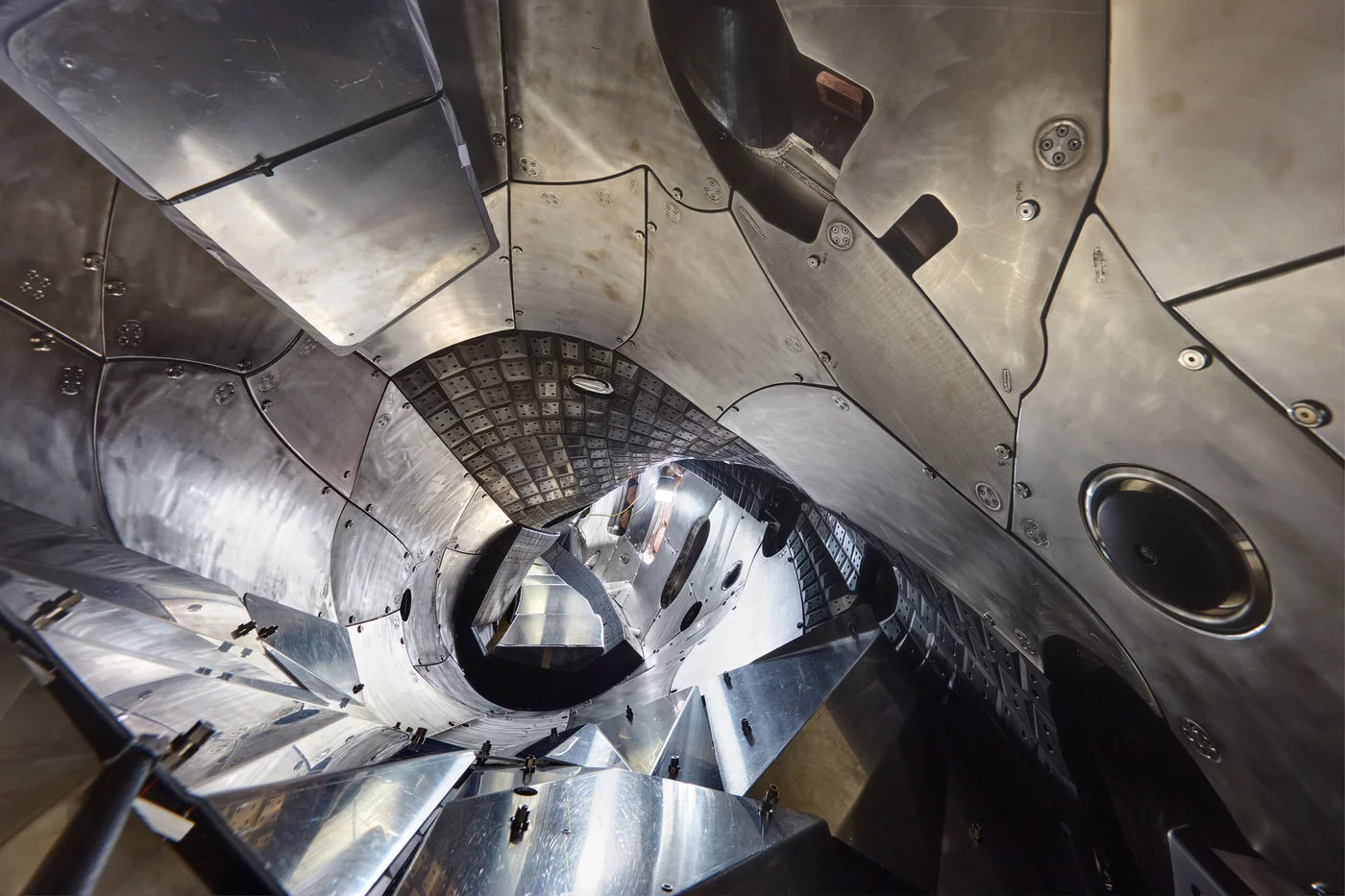Scientists toiling away on the cutting edge Wendelstein 7-X nuclear fusion reactor in Germany have pulled together results from their latest round of testing, with a few records to be found amongst them. Following a series of upgrades, the team is reporting the experimental device has achieved its highest energy density and the longest plasma discharge times for device of this type, marking another step forward in the quest for clean fusion power.
Can something like the Wendelstein 7-X someday be used as part of a zero-emission power plant? Like other experimental nuclear fusion reactors, it is designed to recreate the reaction that takes place in stars, just like our own Sun. The idea is to use magnetic fields to suspend a heated stream of plasma long enough for atomic nuclei within it to fuse together, releasing tremendous amounts of energy in the process.
But holding a stream of plasma in place with magnetic fields isn't easy, especially when it needs to reach temperatures hotter than the Sun. For some time, scientists pursued this through what are known as tokamak fusion reactors, simpler devices built to suspend the plasma stream inside a chamber in nicely rounded doughnut-like shape.
By contrast, Wendelstein 7-X is what is known as a stellarator nuclear reactor. Rather than a clean doughnut shape, it takes a highly complex form using 50 superconductive magnetic coils to hold plasma inside a containment field that twists and turns through an irregular loop. It is hoped this approach can prevent the plasma streams drifting into the outer walls of the reactor and collapsing.
Though the idea of a stellarator first bobbed up at Princeton way back in 1951, the calculations they require were seen as too complex to realistically entertain until the arrival of the supercomputer. Even then the Wendelstein 7-X took 15 years to put together, but the result is the largest and most sophisticated stellarator device the world has ever seen.
Scientists at the Max Planck Institute for Plasma Physics first fired it up in December 2015, and have made regular strides forward since then. That initial flash of helium plasma lasting one tenth of a second was followed up months later with the first burst of hydrogen plasma, lasting all of a quarter of a second.

Now the team says its latest round of experiments have achieved long-lasting plasmas of more than 100 seconds for the first time, a record for this kind of stellarator. What's more, they are also reporting unprecedented energy yields, brought on by newly installed components that inject fast hydrogen atoms into the plasma stream.
This resulted in high plasma densities of 2 x 1020 particles per cubic meter, which according to the scientists, are values sufficient for a future power station. The energy content of the plasma exceeded 1 megajoule for the first time ever, without the vessel walls becoming too hot. The plasma temperature, meanwhile, hit 20 million °C (36 million °F), exceeding the Sun's temperature of 15 million °C ( 27 million °F).
"Congratulations to the Wendelstein 7-X team on the new world record," said Germany's Federal Research Minister, Anja Karliczek. "The approach is the right one – in this way, important new findings have been made for the future use of fusion power stations. Alongside renewables, fusion energy could be the energy source of the future. The researchers in Greifswald have taken an important step in this direction with their work. I wish the team every success with their future work."

Though more than a million assembly hours went into the initial construction of the Wendelstein 7-X, the stellarator remains a constant work in progress. In September 2017, the interior walls of the container were fitted with graphite tiles, allowing for higher internal temperatures and longer plasma discharges. Though these proved pivotal in the team's latest success, they are already due to be replaced with water-cooled elements made from carbon fiber.
This will help the team work toward its aims of continuously containing super-hot plasma in the Wendelstein 7-X's contorted magnetic fields for more than 30 minutes at a time. Though the device is not actually designed to produce energy, if it can be achieved, this highly elaborate proof-of-concept device would provide compelling evidence that stellarators, and nuclear fusion, can form part of an environmentally sustainable energy mix. Though, for now, that still remains a big if.





